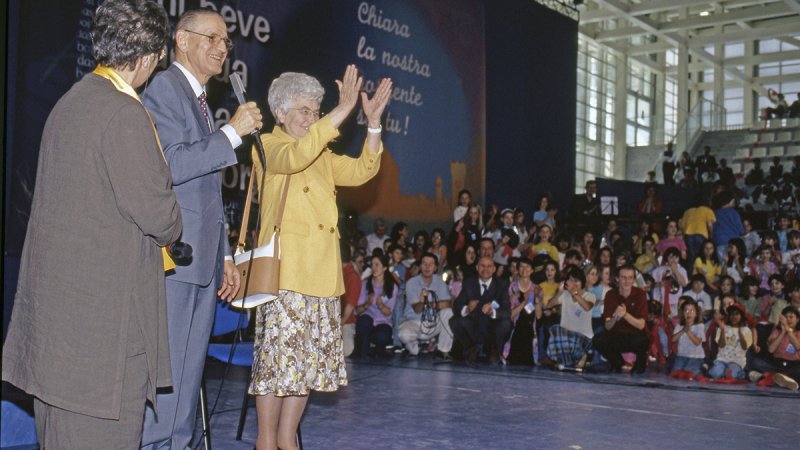
May 15, 2017 | Non categorizzato
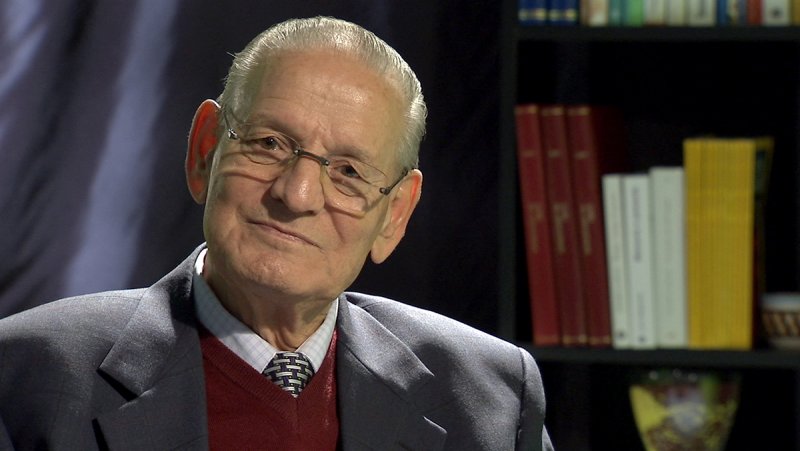 It was the end of 1945 in Trent, Italy, when the war had just ended. Marco was 19 years old and going through a very deep spiritual crisis. A friend who belonged to a community of Men Religious had invited him to a meeting. A young woman, a little older than himself, “spoke about God with such fervour and conviction that there wasn’t any room for doubts,” he later recalled. That young woman was Chiara Lubich who was joined by a group of girls who, like her, had chosen God as their ideal in life. In no time, Marco became the first young man to follow her. He was the first focolarino. The Tecilla family were simple folk, his father a baker, his mother a nurse, one sister and three brothers. With the Great Depression of 1929, his father lost his job. “I remember him covering himself with a mantle in the cold winter months,” Marco recounts, “and me accompanying him from one bread shop to the next, knocking on doors and asking for work, or basket of bread to feed ourselves. I later discovered that as he held on to my hand, with the other hand he counted the beads of his Rosary.” In January 1943 his father died. War broke out and the bombardments began on Trent. The Tecilla family fled to the mountains. Marco avoided the call to arms by signing up for civil service. Meanwhile,he was hired as an operator at the Trento- Malè Railway. His sister, Maria, began to attend a lot of spiritual retreats and to collect clothing for the poor. The family – and Marco – thought she was “over doing it” – until he received that invitation from the friend who belonged to the Men’s Religious community and Marco’s encounter with God-Love.
It was the end of 1945 in Trent, Italy, when the war had just ended. Marco was 19 years old and going through a very deep spiritual crisis. A friend who belonged to a community of Men Religious had invited him to a meeting. A young woman, a little older than himself, “spoke about God with such fervour and conviction that there wasn’t any room for doubts,” he later recalled. That young woman was Chiara Lubich who was joined by a group of girls who, like her, had chosen God as their ideal in life. In no time, Marco became the first young man to follow her. He was the first focolarino. The Tecilla family were simple folk, his father a baker, his mother a nurse, one sister and three brothers. With the Great Depression of 1929, his father lost his job. “I remember him covering himself with a mantle in the cold winter months,” Marco recounts, “and me accompanying him from one bread shop to the next, knocking on doors and asking for work, or basket of bread to feed ourselves. I later discovered that as he held on to my hand, with the other hand he counted the beads of his Rosary.” In January 1943 his father died. War broke out and the bombardments began on Trent. The Tecilla family fled to the mountains. Marco avoided the call to arms by signing up for civil service. Meanwhile,he was hired as an operator at the Trento- Malè Railway. His sister, Maria, began to attend a lot of spiritual retreats and to collect clothing for the poor. The family – and Marco – thought she was “over doing it” – until he received that invitation from the friend who belonged to the Men’s Religious community and Marco’s encounter with God-Love. 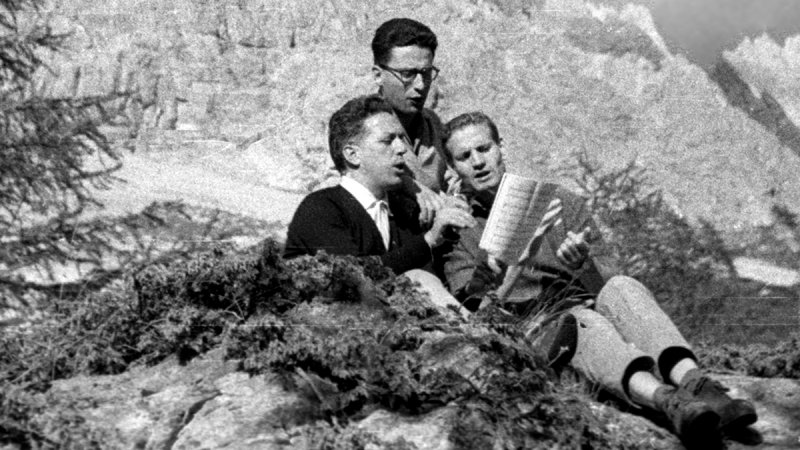 From the moment he met Chiara and the first group of young women, he went often to do odd jobs at the “little house” in Cappuccini square, where the women focolarine lived. He was drawn by the supernatural atmosphere that he found in that place. “One evening,” he recalls, “I had to work a little longer than usual, to finish up some repair work. Chiara was working on some sewing, sitting at the table nearby. Without warning she turned to me and said: “If Jesus were to come today, he would be Jesus 24 hours a day, whether working, praying, eating, resting . . . in today’s world he’d be an electrician like you . . .” Marco was quite struck by “this new vision of the Christian life. I saw a new horizon opening before me, overflowing with light. When I left the “little house” the sky was all dotted with stars. A new life began for me and I had to turn the page and abandon myself to the arms of the God who had manifested himself to me as LOVE.” Marco felt that Jesus was calling to him: If you want to be perfect go and sell what you have and give it to the poor; then, come and follow me. Following Jesus, that’s my path.” On the evening of November 27, 1948 the first men’s focolare was begun with Livio who had also been added to the group. Marco never imagined that in the years to come he would be moved thirty times! The nascent Movement spread quickly all over the world and Marco would move to many cities in Italy . . . In 1953 to Innsbruck, in 1958 to Uruguay, Argentina, Brazil and Chile; in 1960 to Trieste, Italy, and then beyond the Iron Curtain in Zagreb. On November 22, 1964 he was to the priesthood and returned to Brazil until 1967, returning again until 1971. Then he was in southern Italy and Milan, Padua and finally Trent after 31 years away. That is when he found the land for the new Mariapolis Centre in Cadine and took part in the project that Chiara Lubich launched in 2001: Trento Ardente. At the end of that year, Chiara wanted him at the Centre of the Movement in Rocca di Papa, Italy, where he would live out the last years of his life.
From the moment he met Chiara and the first group of young women, he went often to do odd jobs at the “little house” in Cappuccini square, where the women focolarine lived. He was drawn by the supernatural atmosphere that he found in that place. “One evening,” he recalls, “I had to work a little longer than usual, to finish up some repair work. Chiara was working on some sewing, sitting at the table nearby. Without warning she turned to me and said: “If Jesus were to come today, he would be Jesus 24 hours a day, whether working, praying, eating, resting . . . in today’s world he’d be an electrician like you . . .” Marco was quite struck by “this new vision of the Christian life. I saw a new horizon opening before me, overflowing with light. When I left the “little house” the sky was all dotted with stars. A new life began for me and I had to turn the page and abandon myself to the arms of the God who had manifested himself to me as LOVE.” Marco felt that Jesus was calling to him: If you want to be perfect go and sell what you have and give it to the poor; then, come and follow me. Following Jesus, that’s my path.” On the evening of November 27, 1948 the first men’s focolare was begun with Livio who had also been added to the group. Marco never imagined that in the years to come he would be moved thirty times! The nascent Movement spread quickly all over the world and Marco would move to many cities in Italy . . . In 1953 to Innsbruck, in 1958 to Uruguay, Argentina, Brazil and Chile; in 1960 to Trieste, Italy, and then beyond the Iron Curtain in Zagreb. On November 22, 1964 he was to the priesthood and returned to Brazil until 1967, returning again until 1971. Then he was in southern Italy and Milan, Padua and finally Trent after 31 years away. That is when he found the land for the new Mariapolis Centre in Cadine and took part in the project that Chiara Lubich launched in 2001: Trento Ardente. At the end of that year, Chiara wanted him at the Centre of the Movement in Rocca di Papa, Italy, where he would live out the last years of his life.  “His joy was always hard to contain when he came to Loppiano to give lessons on the Spirituality to members of the schools,” recalls Redi Mghenzani who lived with Marco for 20 years, “ [He showed special care and attention] when it came to the new generations of men and women focolarini. He leaves us a trail of light that will never be extinguished.” “Marco sowed love in many parts of the world,” recalls focolarino Armando Droghetti, who accompanied Marco during the final years of his life,” that love which allowed unity to be born among people from all social and cultural backgrounds, as many of the numberless visitors from this past month had said; especially from last year when a series of small strokes affected him in different ways. But as everything seemed to be failing in Marco (his voice became weaker and weaker, his legs were somehow blocked) the situation pushed all of us, beginning with Marco, to supplement our mutual love. Based on this spiritual life and an ever more intense unity in our focolare, even the unexpected crisis of May 8th didn’t catch Marco and us off guard. During a brief upturn in his condition he remarked with great certainty: “I only need to be purified.” He would welcome the doctor with those shining eyes that seemed to wrap everyone in love. And this was also the impression of many who went to say their final goodbye. They said that beyond a sense of orphan hood because of his departure, what Marco had prepared them for by saying I’m nothing and God is everything. Only in Him do we live” – was even stronger. Focolare president, Maria Voce, highlighted that “Marco that mark of radicalness of the early times of the Movement, along with his strength and faith in the charism of unity with the purity of his Gospel live.” In an interview that was released on March 31, 2008, a few days after Chiara Lubich died, Marco stated: “As long as I have a bit of breath, my wish is to be able to give my all to the new generations. I’m sure that whoever comes after us will do greater things than we did, precisely because of the richness that is transmitted by the charism of unity, which will never ever die.”
“His joy was always hard to contain when he came to Loppiano to give lessons on the Spirituality to members of the schools,” recalls Redi Mghenzani who lived with Marco for 20 years, “ [He showed special care and attention] when it came to the new generations of men and women focolarini. He leaves us a trail of light that will never be extinguished.” “Marco sowed love in many parts of the world,” recalls focolarino Armando Droghetti, who accompanied Marco during the final years of his life,” that love which allowed unity to be born among people from all social and cultural backgrounds, as many of the numberless visitors from this past month had said; especially from last year when a series of small strokes affected him in different ways. But as everything seemed to be failing in Marco (his voice became weaker and weaker, his legs were somehow blocked) the situation pushed all of us, beginning with Marco, to supplement our mutual love. Based on this spiritual life and an ever more intense unity in our focolare, even the unexpected crisis of May 8th didn’t catch Marco and us off guard. During a brief upturn in his condition he remarked with great certainty: “I only need to be purified.” He would welcome the doctor with those shining eyes that seemed to wrap everyone in love. And this was also the impression of many who went to say their final goodbye. They said that beyond a sense of orphan hood because of his departure, what Marco had prepared them for by saying I’m nothing and God is everything. Only in Him do we live” – was even stronger. Focolare president, Maria Voce, highlighted that “Marco that mark of radicalness of the early times of the Movement, along with his strength and faith in the charism of unity with the purity of his Gospel live.” In an interview that was released on March 31, 2008, a few days after Chiara Lubich died, Marco stated: “As long as I have a bit of breath, my wish is to be able to give my all to the new generations. I’m sure that whoever comes after us will do greater things than we did, precisely because of the richness that is transmitted by the charism of unity, which will never ever die.”
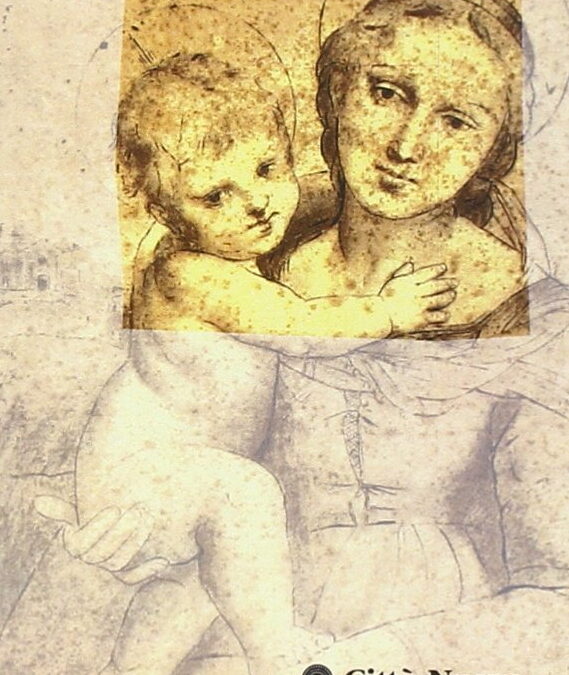
May 14, 2017 | Non categorizzato
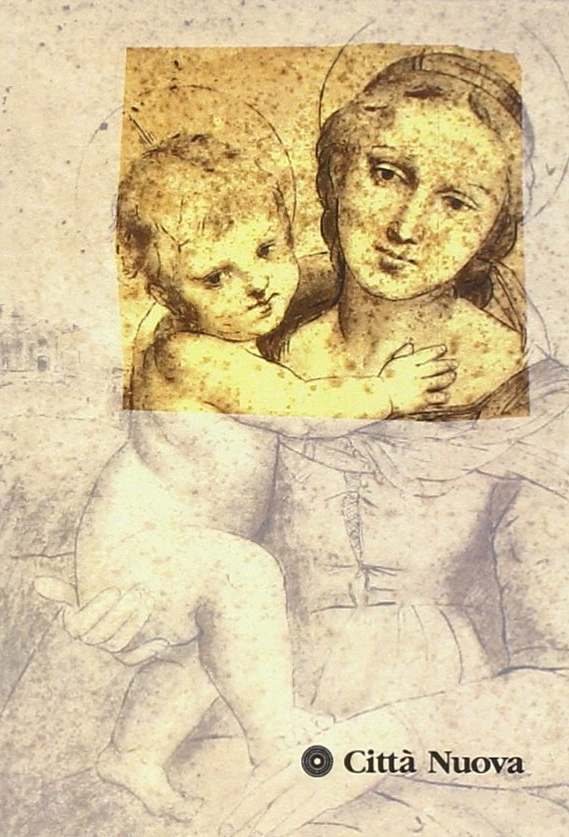 Mary was the most exemplary mother. Therefore, she became and remains forever the model of maternity. Not only was her heart a worthy temple for her Son’s divinity, but also for his humanity, because, whereas he was Man in his perfection, she was not only a woman, but the Woman who lived a double life; that is, an entirely human and divine life, all for the Lord God and all for the Son and, through him, all for humanity. This is how she teaches that the life of the spirit and the life of the flesh can be lived in harmony, in holiness and chastity with one as the custodian of the other. The double life enclosed above all the joys of divinity – the love of the Spouse, the Holy Spirit – and the sufferings of humanity – privations, indecencies, persecutions and finally the slaughter of the cross. From Mary women in general and mothers in particular, and all rational beings, should learn to acquire the wholeness that makes us fully alive Because if you neglect the spiritual element or you neglect the material element – you tumble into error, whether it’s towards humanity or towards divinity. Mary took and gave the proper ranking to that double reality, just the God-Man had done. She was the Virgin and she was the Mother, and she always dissolved suffering into love. She was the strong woman and because God was with her, she had divine strength. She was such a strong example that she has forged millions of human beings, especially mothers of course, who, with Mary were fortified in God, becoming the servants of his will, never giving in to every urge, like people who are empty of the Holy Spirit. “If God is for us, who can be against us?” Mother Frances Cabrini was so fond of these words, and she modelled herself on the Virgin Mother. Also many illustrious martyrs and millions of unknown victims of misery, persecution, wars and disgrace: humble women and men have enclosed their pain inside their hearts as they look towards Mary. Mary forever remains a source of energy: mother of a love that is stronger than death. Saint Bernard says that God wants us to have all things through the hands of Mary, Mary Mother of Grace and Mother of Mercy. Some would argue that Jesus is the mediator of all graces. True enough, but Jesus is our brother, flesh of our flesh, made so by Mary. And turning to him by way of Mary is to place between him, the offended one, and us, the offenders – our mother. Thus a chain is formed in which Mary listens to the sinner. Jesus listens to Mary, the Father listens to Jesus, and the Holy Spirit flows through the relationships. Jesus came to us through Mary: we go to Jesus by the same way; like a river of life that flows from God to [us] and back to God from us. Christians claim their kindship with Christ by way of their Mother’s lips, their kinship with God. Mother of God and my Mother, Medieval spirituality exclaims. And this was translated into verse by the Italian poet, Silvio Pellico[1]. Comforting Virgin, Hope of the afflicted, You are our mother and, together, Mother to our Salvator! Through Mary the human community becomes a family circle where the life that circulates is the life of God.” From Igino Giordani, Maria modello perfetto, (Rome: Città Nuova, 1967; 2012), 81-85; 108-109. [1] Silvio Pellico (1789 – 1854): Italian writer, poet and patriot, famous for writing Le mie prigioni.
Mary was the most exemplary mother. Therefore, she became and remains forever the model of maternity. Not only was her heart a worthy temple for her Son’s divinity, but also for his humanity, because, whereas he was Man in his perfection, she was not only a woman, but the Woman who lived a double life; that is, an entirely human and divine life, all for the Lord God and all for the Son and, through him, all for humanity. This is how she teaches that the life of the spirit and the life of the flesh can be lived in harmony, in holiness and chastity with one as the custodian of the other. The double life enclosed above all the joys of divinity – the love of the Spouse, the Holy Spirit – and the sufferings of humanity – privations, indecencies, persecutions and finally the slaughter of the cross. From Mary women in general and mothers in particular, and all rational beings, should learn to acquire the wholeness that makes us fully alive Because if you neglect the spiritual element or you neglect the material element – you tumble into error, whether it’s towards humanity or towards divinity. Mary took and gave the proper ranking to that double reality, just the God-Man had done. She was the Virgin and she was the Mother, and she always dissolved suffering into love. She was the strong woman and because God was with her, she had divine strength. She was such a strong example that she has forged millions of human beings, especially mothers of course, who, with Mary were fortified in God, becoming the servants of his will, never giving in to every urge, like people who are empty of the Holy Spirit. “If God is for us, who can be against us?” Mother Frances Cabrini was so fond of these words, and she modelled herself on the Virgin Mother. Also many illustrious martyrs and millions of unknown victims of misery, persecution, wars and disgrace: humble women and men have enclosed their pain inside their hearts as they look towards Mary. Mary forever remains a source of energy: mother of a love that is stronger than death. Saint Bernard says that God wants us to have all things through the hands of Mary, Mary Mother of Grace and Mother of Mercy. Some would argue that Jesus is the mediator of all graces. True enough, but Jesus is our brother, flesh of our flesh, made so by Mary. And turning to him by way of Mary is to place between him, the offended one, and us, the offenders – our mother. Thus a chain is formed in which Mary listens to the sinner. Jesus listens to Mary, the Father listens to Jesus, and the Holy Spirit flows through the relationships. Jesus came to us through Mary: we go to Jesus by the same way; like a river of life that flows from God to [us] and back to God from us. Christians claim their kindship with Christ by way of their Mother’s lips, their kinship with God. Mother of God and my Mother, Medieval spirituality exclaims. And this was translated into verse by the Italian poet, Silvio Pellico[1]. Comforting Virgin, Hope of the afflicted, You are our mother and, together, Mother to our Salvator! Through Mary the human community becomes a family circle where the life that circulates is the life of God.” From Igino Giordani, Maria modello perfetto, (Rome: Città Nuova, 1967; 2012), 81-85; 108-109. [1] Silvio Pellico (1789 – 1854): Italian writer, poet and patriot, famous for writing Le mie prigioni.
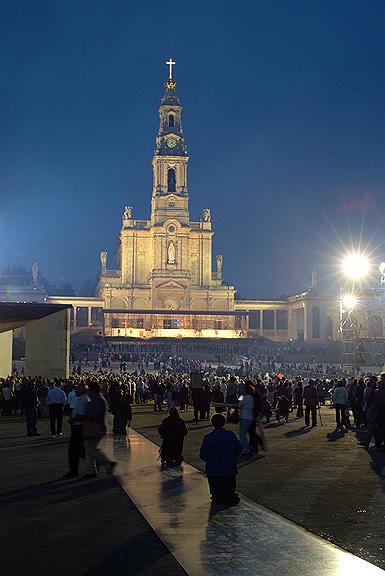
May 13, 2017 | Non categorizzato
 While Portugal welcomes the Holy Father in Fatima, we are highlighting an excerpt of an article of by Chiara Lubich published in the Roman Observatory, in 1984, on the occasion of the Family Jubilee. The Fatima event, Chiara affirmed, calls us to conversion and faithfulness to the Gospel, and also to the family. “[…] When the Pope [John Paul II − editor’s note] read the act of consecration of humanity to Mary, he began with these words: ‘The family is the heart of the Church. Today, from this heart ensues a particular prayer of consecration to the Heart of the Mother of Jesus.’ And so, from heart to Heart in this intense communion, that was created with the Eucharistic celebration, from the heart of the universal Father, arose almost a cry, filled with concern for the needs of humanity, the prayer of consecration to the Virgin Mary, asking her to take special care of the human family. The Pope was there, on kneeing in front of the white image of Our Lady of Fatima. In that moment the thought of many of us present went back to May 13 1981, the day of the assassination attempt. […] Now St. Peter’s Square was packed to the very brim. Next to him before Our Lady of Fatima, like a flower that blossomed from his suffering and blood, all the families of the Church were symbolically gathered like a sign of all the families of the world. At the moment of the world’s consecration to Mary, the Holy Father, as the supreme Pastor, could therefore count not only on the communion of all the Pastors of the Church, “constituting a body and a college”, but also on the full adhesion of the children of the Church, represented by many families of many countries. […]And in the prayer with which he concluded his homily – prayer which he composed for the 1980 Synod that had the family as its theme of study – he asked this grace: “May the love enhanced by the grace of the sacrament of marriage be stronger than any weakness and any crisis that our families sometimes experience.” All these important coincidences and expressions help us to gather the profound meaning of this consecration has to bring all Christian families to live – with the help and example of Mary – the luminous and fascinating plan of God on the family in all its expressions: marriage love, according to the divine plan, sign of Christ’s love for the Church up to the total gift of self; paternity and maternity, as the participation to the fertile love of the Creator; peace and harmony in overcoming all the tensions and difficulties as fruit of an always alive and tireless charity intent on keeping the spiritual presence of Christ in the family and, with Him, the unity of thought and action; an openness of communion and service towards other families. […] The message of Fatima that calls everyone to conversion and faithfulness to the Gospel, becomes the answer of the consecration of the family, a commitment of renewal so that the face of the Church may shine more. In the Christian family the Church is the “family of God” a welcoming dwelling place for all the lost children who are called back to the house of the Father and invited to enter through the maternal heart of the Mother of Jesus.
While Portugal welcomes the Holy Father in Fatima, we are highlighting an excerpt of an article of by Chiara Lubich published in the Roman Observatory, in 1984, on the occasion of the Family Jubilee. The Fatima event, Chiara affirmed, calls us to conversion and faithfulness to the Gospel, and also to the family. “[…] When the Pope [John Paul II − editor’s note] read the act of consecration of humanity to Mary, he began with these words: ‘The family is the heart of the Church. Today, from this heart ensues a particular prayer of consecration to the Heart of the Mother of Jesus.’ And so, from heart to Heart in this intense communion, that was created with the Eucharistic celebration, from the heart of the universal Father, arose almost a cry, filled with concern for the needs of humanity, the prayer of consecration to the Virgin Mary, asking her to take special care of the human family. The Pope was there, on kneeing in front of the white image of Our Lady of Fatima. In that moment the thought of many of us present went back to May 13 1981, the day of the assassination attempt. […] Now St. Peter’s Square was packed to the very brim. Next to him before Our Lady of Fatima, like a flower that blossomed from his suffering and blood, all the families of the Church were symbolically gathered like a sign of all the families of the world. At the moment of the world’s consecration to Mary, the Holy Father, as the supreme Pastor, could therefore count not only on the communion of all the Pastors of the Church, “constituting a body and a college”, but also on the full adhesion of the children of the Church, represented by many families of many countries. […]And in the prayer with which he concluded his homily – prayer which he composed for the 1980 Synod that had the family as its theme of study – he asked this grace: “May the love enhanced by the grace of the sacrament of marriage be stronger than any weakness and any crisis that our families sometimes experience.” All these important coincidences and expressions help us to gather the profound meaning of this consecration has to bring all Christian families to live – with the help and example of Mary – the luminous and fascinating plan of God on the family in all its expressions: marriage love, according to the divine plan, sign of Christ’s love for the Church up to the total gift of self; paternity and maternity, as the participation to the fertile love of the Creator; peace and harmony in overcoming all the tensions and difficulties as fruit of an always alive and tireless charity intent on keeping the spiritual presence of Christ in the family and, with Him, the unity of thought and action; an openness of communion and service towards other families. […] The message of Fatima that calls everyone to conversion and faithfulness to the Gospel, becomes the answer of the consecration of the family, a commitment of renewal so that the face of the Church may shine more. In the Christian family the Church is the “family of God” a welcoming dwelling place for all the lost children who are called back to the house of the Father and invited to enter through the maternal heart of the Mother of Jesus.
Chiara Lubich
(Osservatore Romano 25.03.1984)
May 12, 2017 | Non categorizzato
https://youtu.be/FZLJ_xLw9dk
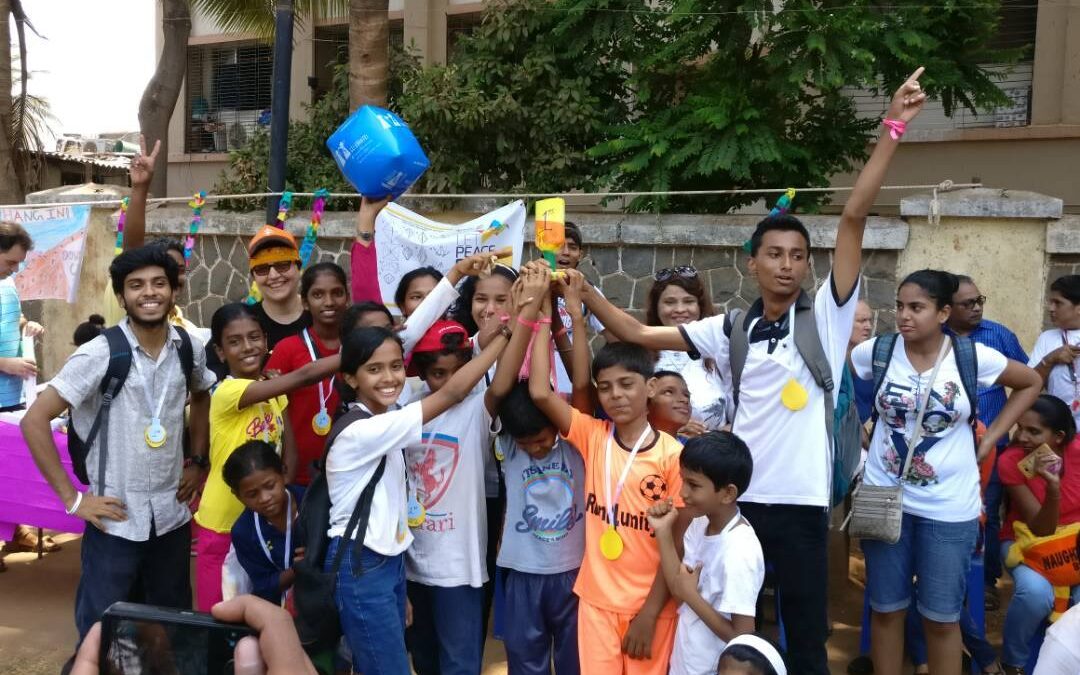
May 12, 2017 | Senza categoria
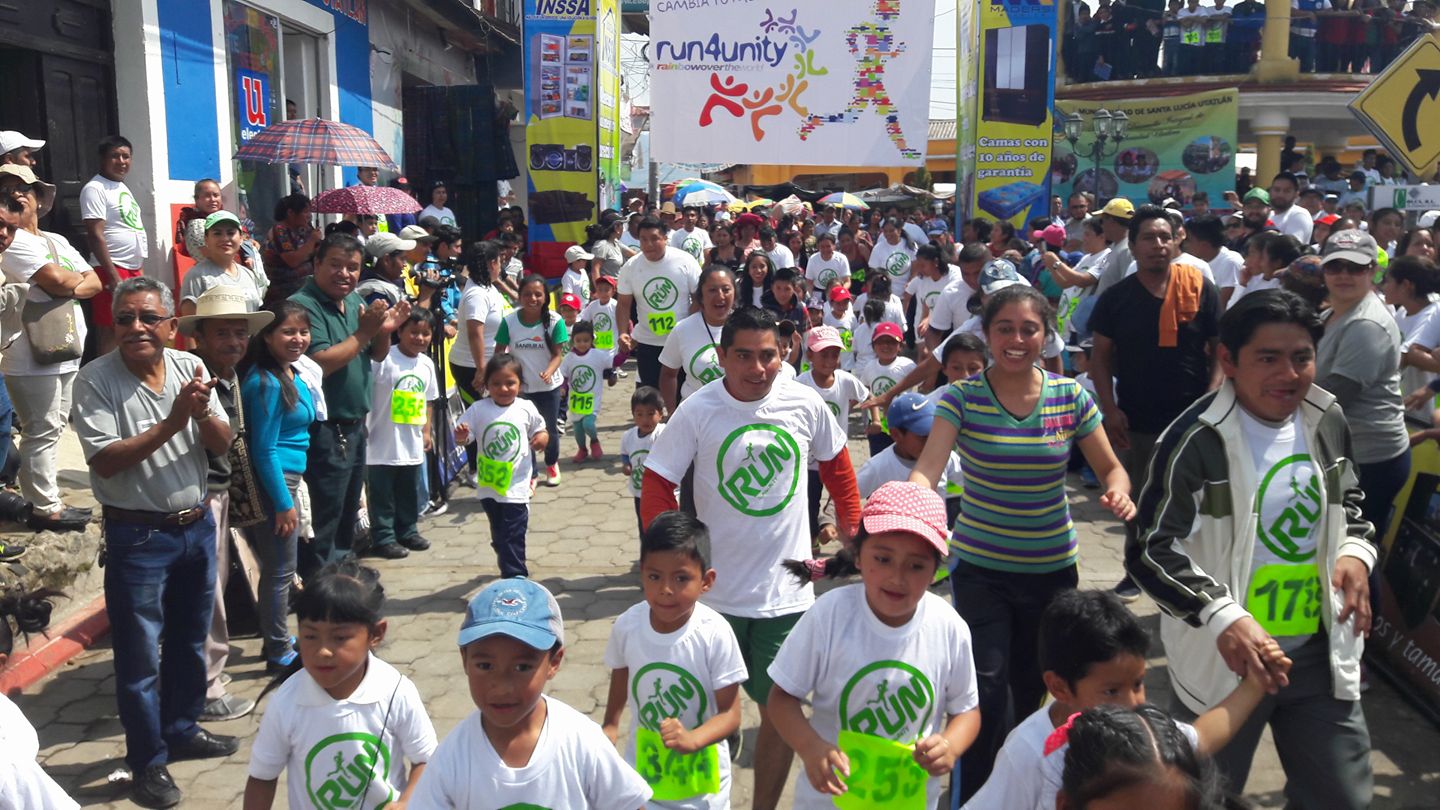 The race flowed through time zones from East to West with a message of brotherhood for the world. It’s Run4Unity, the annual relay race organized by the teenage members of the Focolare Movement. With a time difference of five hours, in Sopron, Hungary, the race charged through the border with Austria where young people from a refugee camp were on their way to meet up with the runners. Jumping over 10 time zones between Mexicali, Mexico and Calexico, USA, a hundred teenagers converged on the wall that separates their two nations. On this day hatred and racism don’t have a country. The race concluded World Unity Week, seven days of projects and events in favour of peace and unity among peoples: from Ecuador and its humanitarian emergency after the earthquake, to Medan, Indonesia, with a concert for peace, to Goma in the Democratic Republic of the Congo and the Amani Music Festival, three days of music-making and dancing for peace. There was a meaningful video message from teenagers in Aleppo, Syria, to their peers in Argentina. Run4Unity is a multi-staged journey that cuts through the planet’s most controversial border crossings between the hours of eleven and twelve o’clock local time. On foot, on a bike, on roller-skates, in boats or standing silently in prayer – once again this year it was the most against-the-current race there has ever been, a prophetic sign of the unity that will one day be ours. In this race willing hearts mattered more than quick feet. Each stop along the way provided sport events solidarity projects, presentations of experiences of active citizenship in places where solitude, poverty and marginalisation are prevalent – all of it to show that a united world is still possible, despite worrying tensions.
The race flowed through time zones from East to West with a message of brotherhood for the world. It’s Run4Unity, the annual relay race organized by the teenage members of the Focolare Movement. With a time difference of five hours, in Sopron, Hungary, the race charged through the border with Austria where young people from a refugee camp were on their way to meet up with the runners. Jumping over 10 time zones between Mexicali, Mexico and Calexico, USA, a hundred teenagers converged on the wall that separates their two nations. On this day hatred and racism don’t have a country. The race concluded World Unity Week, seven days of projects and events in favour of peace and unity among peoples: from Ecuador and its humanitarian emergency after the earthquake, to Medan, Indonesia, with a concert for peace, to Goma in the Democratic Republic of the Congo and the Amani Music Festival, three days of music-making and dancing for peace. There was a meaningful video message from teenagers in Aleppo, Syria, to their peers in Argentina. Run4Unity is a multi-staged journey that cuts through the planet’s most controversial border crossings between the hours of eleven and twelve o’clock local time. On foot, on a bike, on roller-skates, in boats or standing silently in prayer – once again this year it was the most against-the-current race there has ever been, a prophetic sign of the unity that will one day be ours. In this race willing hearts mattered more than quick feet. Each stop along the way provided sport events solidarity projects, presentations of experiences of active citizenship in places where solitude, poverty and marginalisation are prevalent – all of it to show that a united world is still possible, despite worrying tensions. 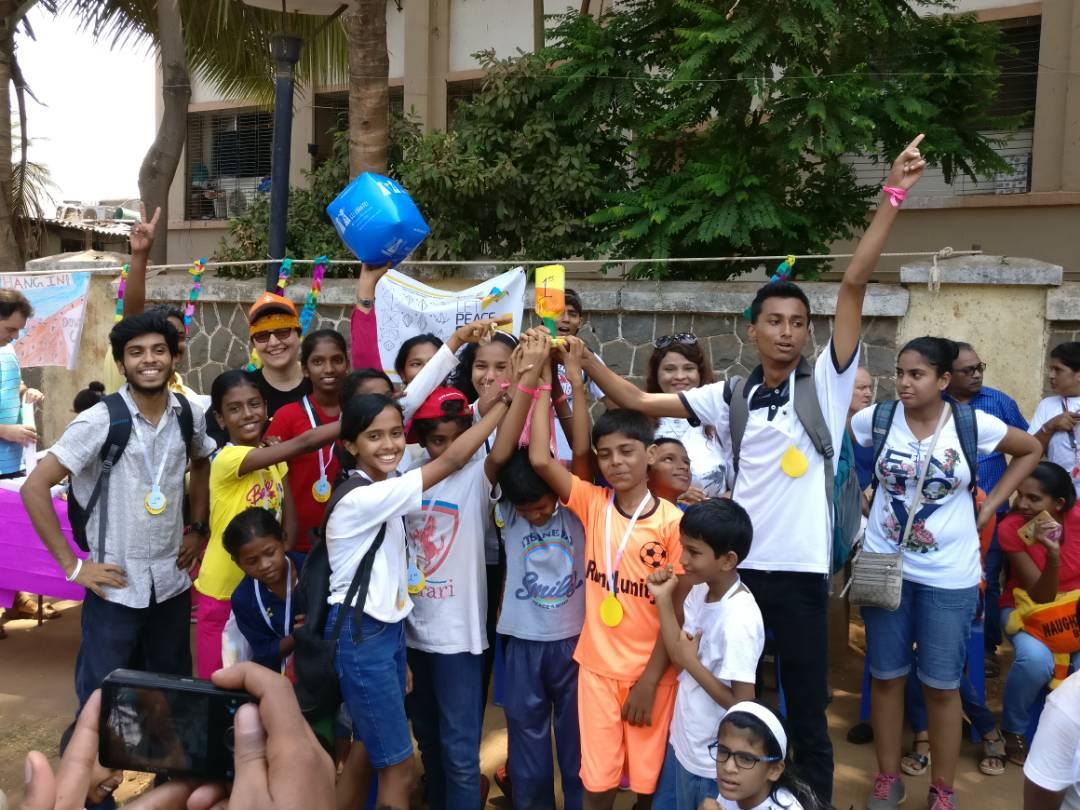 In Penang, West Malaysia, Run4Unity was a Unity Walk, an 8km trek that drew in 1200 people of all ages and belonging to different ethnic, cultural and religious groups: Hindus, Muslims, Sikhs, Christians and Buddhists. In India the race expressed its desire for peace as it flowed through downtown New Dehli, from Gandhi to Smirti where Mahatma Gandhi was murdered in 1948 and is now a sacred site, then on to the India Gate monument that is dedicated to soldiers who never returned from war. In Dresden, Germany, Run4Unity was held as part of the Pulse of Europe event, which was meant to encourage citizens to listen to the heartbeat of Europe. In Columbus, USA, Run4Unity was held at a centre for at risk people. It included games, messages of peace and sharing the Golden Rule. Then they cleaned the streets and shared sandwiches with the homeless. In Santa Lucia Utatlàn, Guatemala, the race was an opportunity for a multi-cultural event that brought together a thousand people from different ethnic groups, including youngsters from the Maya community of Quiché. In Iglesias, Italy, Run4Unity took on a rather different form: Disarmament Awareness. There are two bombs and weapons factories in the region, which produce arms to be used in today’s wars. Teenagers around the globe imagine a different kind world, one without wars, walls and hatred. Their message has also gone viral online. Radioimmaginaria, the first European radio station run exclusively for and by teenagers, dedicated live direct coverage of the Run4Unity events around the world. Because, they say, “at fifteen years of age you’re allowed to imagine the world of the future.”
In Penang, West Malaysia, Run4Unity was a Unity Walk, an 8km trek that drew in 1200 people of all ages and belonging to different ethnic, cultural and religious groups: Hindus, Muslims, Sikhs, Christians and Buddhists. In India the race expressed its desire for peace as it flowed through downtown New Dehli, from Gandhi to Smirti where Mahatma Gandhi was murdered in 1948 and is now a sacred site, then on to the India Gate monument that is dedicated to soldiers who never returned from war. In Dresden, Germany, Run4Unity was held as part of the Pulse of Europe event, which was meant to encourage citizens to listen to the heartbeat of Europe. In Columbus, USA, Run4Unity was held at a centre for at risk people. It included games, messages of peace and sharing the Golden Rule. Then they cleaned the streets and shared sandwiches with the homeless. In Santa Lucia Utatlàn, Guatemala, the race was an opportunity for a multi-cultural event that brought together a thousand people from different ethnic groups, including youngsters from the Maya community of Quiché. In Iglesias, Italy, Run4Unity took on a rather different form: Disarmament Awareness. There are two bombs and weapons factories in the region, which produce arms to be used in today’s wars. Teenagers around the globe imagine a different kind world, one without wars, walls and hatred. Their message has also gone viral online. Radioimmaginaria, the first European radio station run exclusively for and by teenagers, dedicated live direct coverage of the Run4Unity events around the world. Because, they say, “at fifteen years of age you’re allowed to imagine the world of the future.”
![Celebrating a Europe of Hope in Malta]()
May 11, 2017 | Focolare Worldwide
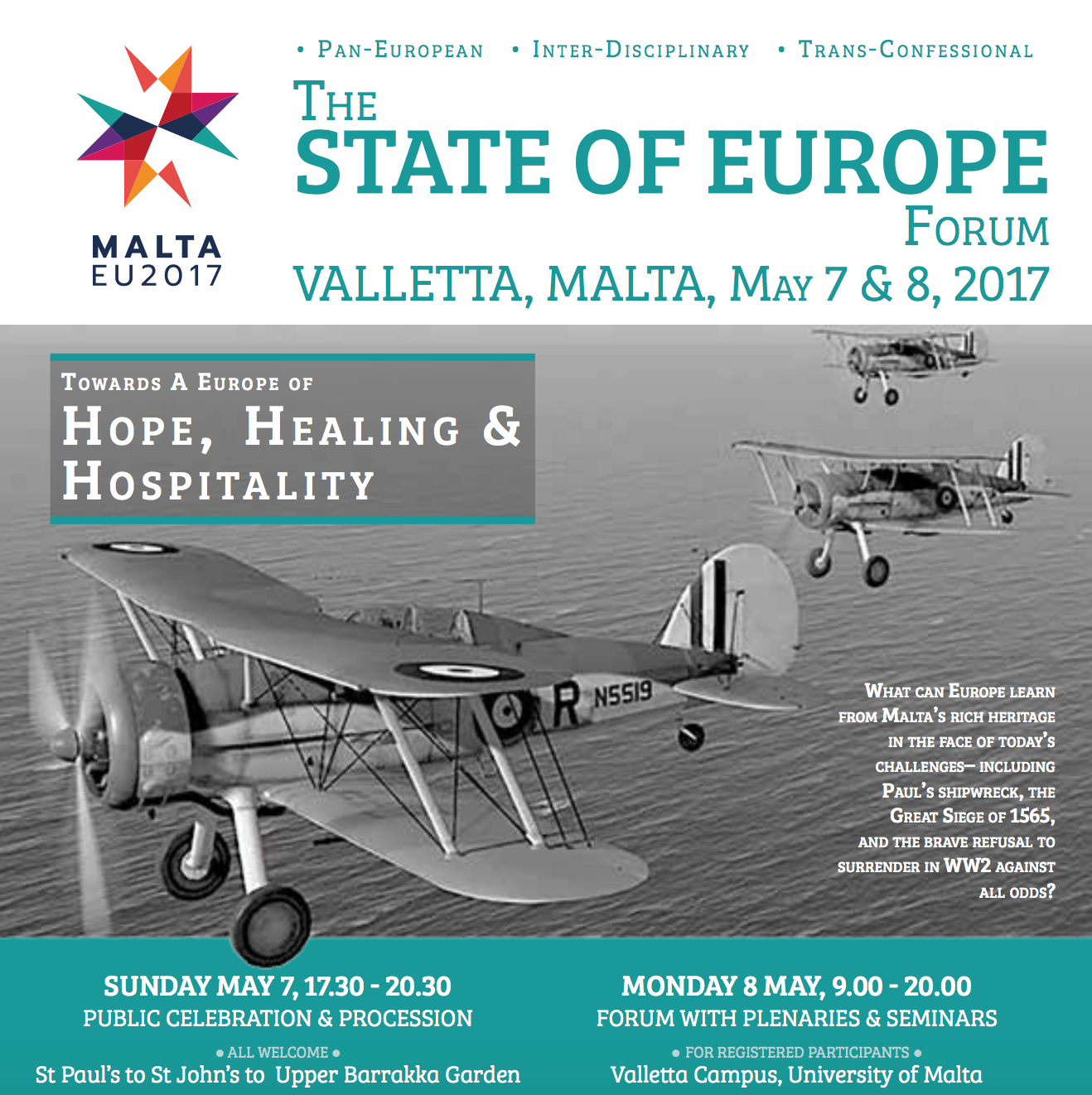 Malta is the largest island in the archipelago that shares its name. It is located in the central Mediterranean Sea between Sicily, Tunisia and Libya. It was the head of the Council of the European Union for the first time in its history in 2017. The island, whose symbol is the eight-cusped cross, signifying the eight Beatitudes, pertaining to the Knights of Malta, is closely situated to the tragedies that occur daily in the blue tomb that the Mediterranean Sea has become for those crossing between Africa, the Middle East and Europe in a desperate search for a new chance at life. On one of its other shores another shipwreck had found safe port after fourteen days adrift. One of the passengers was Saint Paul on his way back to Rome in around AD 60. According to tradition the ship carrying him and another 264 passengers was sunk by a storm, and everyone on board swam to shore. After some time he was invited to stay at the house of Publius, the Roman governor of the islands, whose father Paul cured of a serious flu. The governor converted to Christianity and became the first bishop of Malta. Europe’s Christian roots were the focus of discussion in Malta’s capital of Valletta on the 7th and 8th of May during a forum titled Towards a Europe of Hope, Healing and Hospitality. The goal of the forum, which is held each year by the European Union in the country of the presidency, is the promotion of dialogue according to the foundational inspiration of Robert Schuman. On the first day, after the opening events at the Anglican Cathedral, there was an artistic performance and a prayer titled “Hope”. Then a procession led through the streets of Valletta to the Roman Catholic Co-Cathedral of Saint John where some words were offered by Archbishop Scicluna and Maria Voce. The Focolare president offered a reflection on “Healing and Reconciliation”.
Malta is the largest island in the archipelago that shares its name. It is located in the central Mediterranean Sea between Sicily, Tunisia and Libya. It was the head of the Council of the European Union for the first time in its history in 2017. The island, whose symbol is the eight-cusped cross, signifying the eight Beatitudes, pertaining to the Knights of Malta, is closely situated to the tragedies that occur daily in the blue tomb that the Mediterranean Sea has become for those crossing between Africa, the Middle East and Europe in a desperate search for a new chance at life. On one of its other shores another shipwreck had found safe port after fourteen days adrift. One of the passengers was Saint Paul on his way back to Rome in around AD 60. According to tradition the ship carrying him and another 264 passengers was sunk by a storm, and everyone on board swam to shore. After some time he was invited to stay at the house of Publius, the Roman governor of the islands, whose father Paul cured of a serious flu. The governor converted to Christianity and became the first bishop of Malta. Europe’s Christian roots were the focus of discussion in Malta’s capital of Valletta on the 7th and 8th of May during a forum titled Towards a Europe of Hope, Healing and Hospitality. The goal of the forum, which is held each year by the European Union in the country of the presidency, is the promotion of dialogue according to the foundational inspiration of Robert Schuman. On the first day, after the opening events at the Anglican Cathedral, there was an artistic performance and a prayer titled “Hope”. Then a procession led through the streets of Valletta to the Roman Catholic Co-Cathedral of Saint John where some words were offered by Archbishop Scicluna and Maria Voce. The Focolare president offered a reflection on “Healing and Reconciliation”. 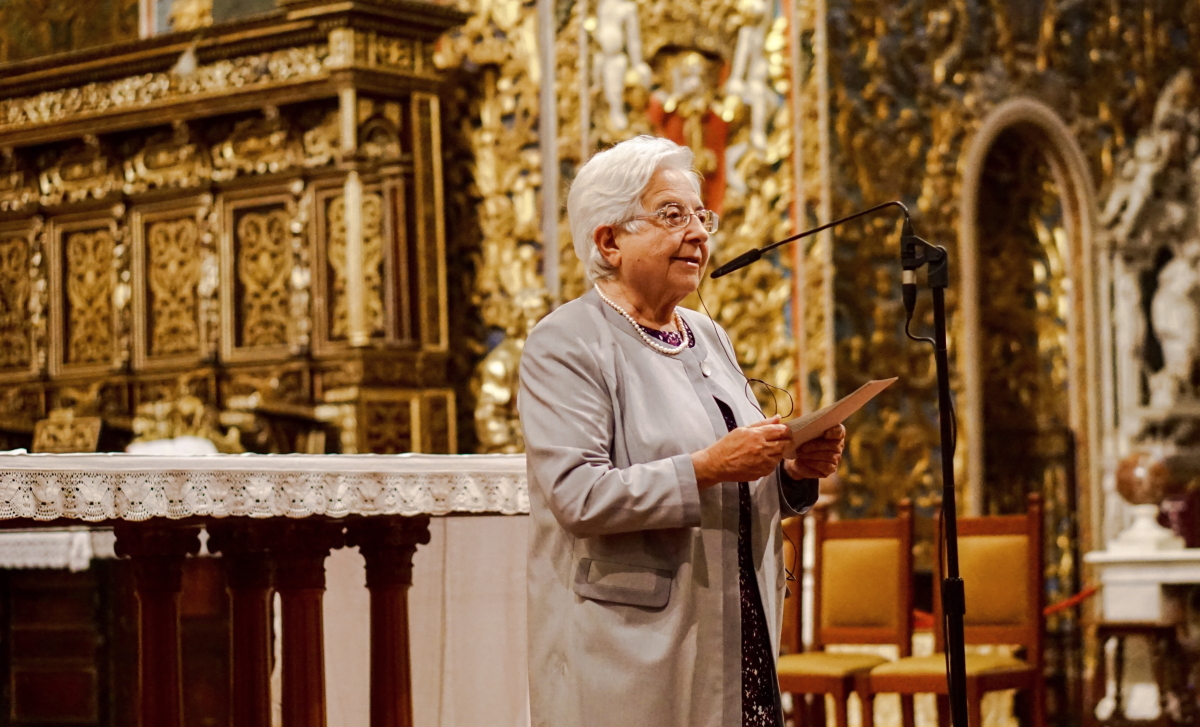 On the anniversary of that “community of peoples” that Schuman envisioned in 1950, proposing the historic coal and steel community to avoid all forms of war between France, Germany and any country who would later join the community, Maria Voce asked what the inspirational spark might have been behind such an extraordinary gesture that was intended to bring reconciliation to populations overwhelmed by the most horrible conflicts ever seen up until then. Who had inspired Schuman, Adenauer, De Gasperi – all Christian statesmen who are considered the founding fathers of Europe? The answer is obvious: “We want to think that the ideas and the strength to build Europe came from God who had shown his love for all people by suffering an infamous and atrocious death, God had identified with all the pains of humanity, including the ones deriving from violence and wars.”
On the anniversary of that “community of peoples” that Schuman envisioned in 1950, proposing the historic coal and steel community to avoid all forms of war between France, Germany and any country who would later join the community, Maria Voce asked what the inspirational spark might have been behind such an extraordinary gesture that was intended to bring reconciliation to populations overwhelmed by the most horrible conflicts ever seen up until then. Who had inspired Schuman, Adenauer, De Gasperi – all Christian statesmen who are considered the founding fathers of Europe? The answer is obvious: “We want to think that the ideas and the strength to build Europe came from God who had shown his love for all people by suffering an infamous and atrocious death, God had identified with all the pains of humanity, including the ones deriving from violence and wars.” 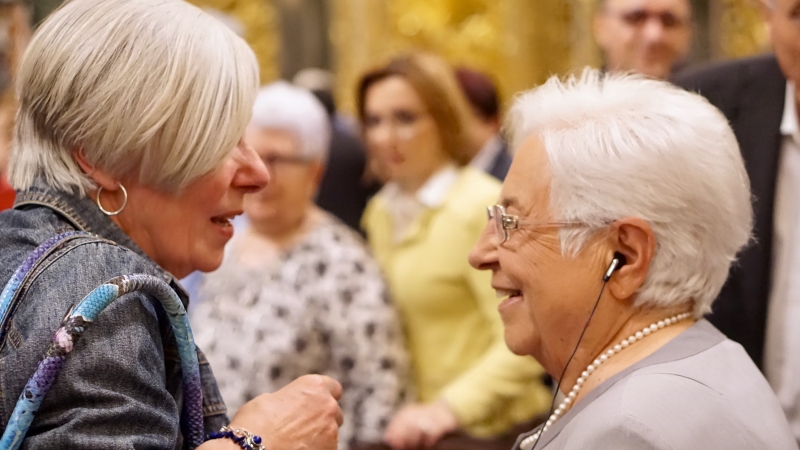 With regard to the culture that could emerge when there is profound reconciliation, Maria Voce quoted Chiara Lubich: “Every person can have a contribution to give – in any field: science, art, politics, communications, and so on. And they will be more efficacious if they work together with others who are united in the name of Christ: it is the continuation of the Incarnation and, it is in this way, that what could be called a culture of the Resurrection spreads through the world.” But for this to happen, “a path towards full and visible communion is asked of us, Christians, knowing that this will be decisive for the unity of Europe and for serving humanity better.” Recently, this path began to unfold further stages, in Lund, Sweden, Lesbos, Greece, and Cuba. “In a multi-cultural and multi-religious Europe there is need for a new capacity to dialogue, dialogue that can be based on the Golden Rule that is found in every religion on earth.” How significant to be saying these things precisely in the safe port of Malta in the midst of the Mediterranean, in the hope that this blue tomb will again become “Mare Nostrum” where Europe, Africa and the Middle East can find a peaceful route.
With regard to the culture that could emerge when there is profound reconciliation, Maria Voce quoted Chiara Lubich: “Every person can have a contribution to give – in any field: science, art, politics, communications, and so on. And they will be more efficacious if they work together with others who are united in the name of Christ: it is the continuation of the Incarnation and, it is in this way, that what could be called a culture of the Resurrection spreads through the world.” But for this to happen, “a path towards full and visible communion is asked of us, Christians, knowing that this will be decisive for the unity of Europe and for serving humanity better.” Recently, this path began to unfold further stages, in Lund, Sweden, Lesbos, Greece, and Cuba. “In a multi-cultural and multi-religious Europe there is need for a new capacity to dialogue, dialogue that can be based on the Golden Rule that is found in every religion on earth.” How significant to be saying these things precisely in the safe port of Malta in the midst of the Mediterranean, in the hope that this blue tomb will again become “Mare Nostrum” where Europe, Africa and the Middle East can find a peaceful route.
![Celebrating a Europe of Hope in Malta]()
May 10, 2017 | Non categorizzato
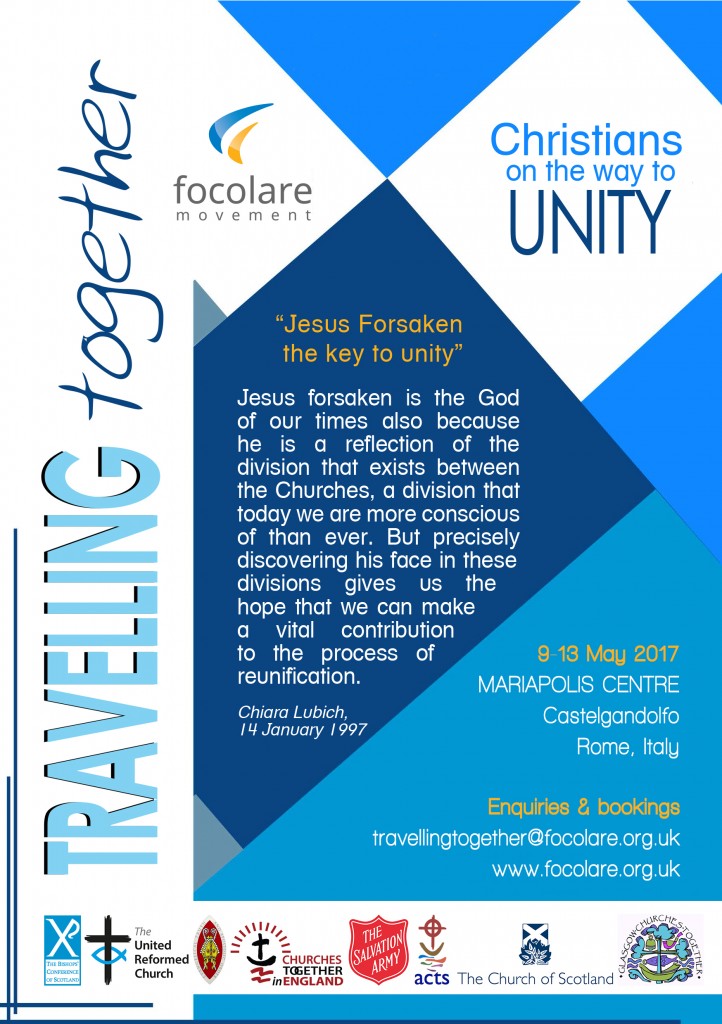 “Unity among Churches requires heroes, heroes in faith, heroes who face history, heroes who are humble in spirit”. Pope Tawadros II said these words in Alexandria, Egypt in 2015, when celebrating the first Day of Friendship between the Orthodox Coptic Church and the Catholic Church. During his recent visit to Cairo, Pope Francis repeated the same thought when he said, “In the light of God who wishes us to be ‘perfectly one’ it is no longer possible to take refuge behind the pretext of differing interpretations, much less of those centuries of history and traditions that estranged us one from the other”. The Pope also spoke about “an already effective communion that grows daily”, the mysterious and ever present fruits of “a genuine ecumenism of blood”, and the importance of progress in our ecumenical journey because “static ecumenism does not exist”. Christians inspired by the Focolare spirituality of unity are convinced of this because of the experience lived in these last years. The 59th Ecumenical Week, to be held at Castelgandolfo, Rome from the 9 to 13 May 2017, blends into the current ecumenical trend, which brings to the foreground gestures, words and statements of Church leaders and also initiatives of Christians in different parts of the world. 700 Christians hailing from 40 countries and belonging to 70 Churches and ecclesial Communities are expected to attend. During this “Ecumenical Mariapoli”, as many prefer to call this event, living together, sharing, spirituality and reflection will take place,and it will be a new step towards “the dialogue of life” and “the ecumenism of the people”. In fact, Chiara envisaged the “dialogue of life” as the typical contribution of the spirituality of unity towards full, visible communion among Churches . It is of utmost importance that people are well prepared ecumenically. Fully aware of the many steps still to be taken and with respect towards all Churches, we try to delve deeper into the common heritage that already unites us. The title of this ecumenical meeting is: “Walking together. Christians on the road to unity”. Its focal point will be a central theme in the spirituality of unity: Jesus crucified and forsaken: the God of our time, foundation for a spirituality of communion. It will be enriched by moments of reflection, dialogue and testimonies of people from different parts of the world, While the 500 years since the Lutheran Reformation are being celebrated in the ecumenical field, among the main speakers, one will find: Bishop Christian Krause, former President of Lutheran World Federation; Rev. Dr. Martin Robra of the World Council of Churches in Geneva; Bishop Brian Farrell, Secretary of the Pontifical Council for Promoting Christian Unity and Maria Voce, President of the Focolare Movement.
“Unity among Churches requires heroes, heroes in faith, heroes who face history, heroes who are humble in spirit”. Pope Tawadros II said these words in Alexandria, Egypt in 2015, when celebrating the first Day of Friendship between the Orthodox Coptic Church and the Catholic Church. During his recent visit to Cairo, Pope Francis repeated the same thought when he said, “In the light of God who wishes us to be ‘perfectly one’ it is no longer possible to take refuge behind the pretext of differing interpretations, much less of those centuries of history and traditions that estranged us one from the other”. The Pope also spoke about “an already effective communion that grows daily”, the mysterious and ever present fruits of “a genuine ecumenism of blood”, and the importance of progress in our ecumenical journey because “static ecumenism does not exist”. Christians inspired by the Focolare spirituality of unity are convinced of this because of the experience lived in these last years. The 59th Ecumenical Week, to be held at Castelgandolfo, Rome from the 9 to 13 May 2017, blends into the current ecumenical trend, which brings to the foreground gestures, words and statements of Church leaders and also initiatives of Christians in different parts of the world. 700 Christians hailing from 40 countries and belonging to 70 Churches and ecclesial Communities are expected to attend. During this “Ecumenical Mariapoli”, as many prefer to call this event, living together, sharing, spirituality and reflection will take place,and it will be a new step towards “the dialogue of life” and “the ecumenism of the people”. In fact, Chiara envisaged the “dialogue of life” as the typical contribution of the spirituality of unity towards full, visible communion among Churches . It is of utmost importance that people are well prepared ecumenically. Fully aware of the many steps still to be taken and with respect towards all Churches, we try to delve deeper into the common heritage that already unites us. The title of this ecumenical meeting is: “Walking together. Christians on the road to unity”. Its focal point will be a central theme in the spirituality of unity: Jesus crucified and forsaken: the God of our time, foundation for a spirituality of communion. It will be enriched by moments of reflection, dialogue and testimonies of people from different parts of the world, While the 500 years since the Lutheran Reformation are being celebrated in the ecumenical field, among the main speakers, one will find: Bishop Christian Krause, former President of Lutheran World Federation; Rev. Dr. Martin Robra of the World Council of Churches in Geneva; Bishop Brian Farrell, Secretary of the Pontifical Council for Promoting Christian Unity and Maria Voce, President of the Focolare Movement.  A special moment has been entrusted to His Most Rev. Eminence Zervos Gennadios, Orthodox Archbishop of Italy and Malta. He will be speaking about: “50 years after the first meeting of two protagonists of dialogue: Ecumenical Patriarch Athenagoras I and Chiara Lubich “. The programme also includes participation in the General audience with Pope Francis at St. Peter’s Square, a visit to St. Peter’s Basilica and to St. Paul Outside the Walls Baslica and common prayers at the St. Domitilla and St. Sebastian Catacombs. This 59th Ecumenical Week is also meant to manifest the Focolare’s renewed ecumenical commitment, expressed recently in the Ottmaring Declaration, which promises to do all that is possible “so that all our activities, initiatives and meetings, both internationally and locally, will be sustained by this open, brotherly behaviour among Christians, while we entrust to God the hastening of our Churches’ journey towards celebrating in the one chalice”. Press Release
A special moment has been entrusted to His Most Rev. Eminence Zervos Gennadios, Orthodox Archbishop of Italy and Malta. He will be speaking about: “50 years after the first meeting of two protagonists of dialogue: Ecumenical Patriarch Athenagoras I and Chiara Lubich “. The programme also includes participation in the General audience with Pope Francis at St. Peter’s Square, a visit to St. Peter’s Basilica and to St. Paul Outside the Walls Baslica and common prayers at the St. Domitilla and St. Sebastian Catacombs. This 59th Ecumenical Week is also meant to manifest the Focolare’s renewed ecumenical commitment, expressed recently in the Ottmaring Declaration, which promises to do all that is possible “so that all our activities, initiatives and meetings, both internationally and locally, will be sustained by this open, brotherly behaviour among Christians, while we entrust to God the hastening of our Churches’ journey towards celebrating in the one chalice”. Press Release
May 10, 2017 | Non categorizzato
On May 10, 2013, Pope Tawadros II of the Coptic Orthodox Church visited Pope Francis at the Vatican for the first time. In memory of that historic meeting, when he returned to Egypt he declared a day of Coptic-Catholic friendship that has been held ever since on May 10. The pope recently repaid the visit when he went to Cairo.
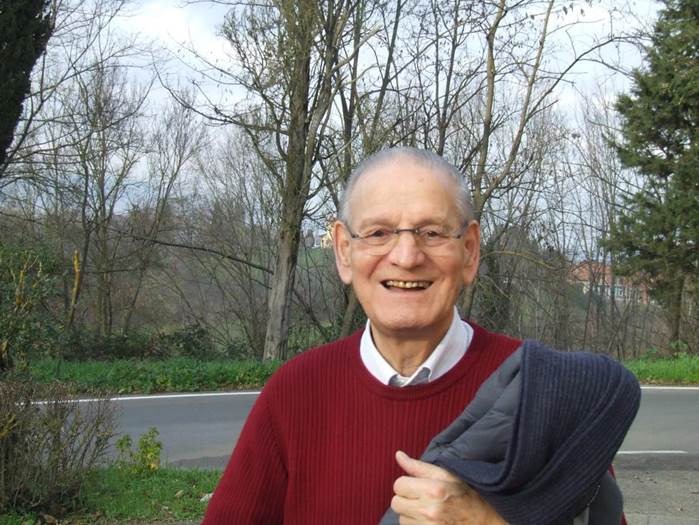
May 9, 2017 | Non categorizzato
 “This evening, Marco Tecilla, the first focolarino, is latest pearl to be added to the crown of Mary. With infinite gratitude, we gather around him in an embrace which unites heaven and earth,” writes Maria Voce, President of the Focolare Movement, when she announced the passing of Marco, the first young man to follow Chiara Lubich in the way of the Focolare. The funeral will be held tomorrow, Wednesday 10th May, at 11.00 am at the Mariapolis Centre in Castel Gandolfo (Rome).
“This evening, Marco Tecilla, the first focolarino, is latest pearl to be added to the crown of Mary. With infinite gratitude, we gather around him in an embrace which unites heaven and earth,” writes Maria Voce, President of the Focolare Movement, when she announced the passing of Marco, the first young man to follow Chiara Lubich in the way of the Focolare. The funeral will be held tomorrow, Wednesday 10th May, at 11.00 am at the Mariapolis Centre in Castel Gandolfo (Rome).
![Celebrating a Europe of Hope in Malta]()
May 9, 2017 | Focolare Worldwide
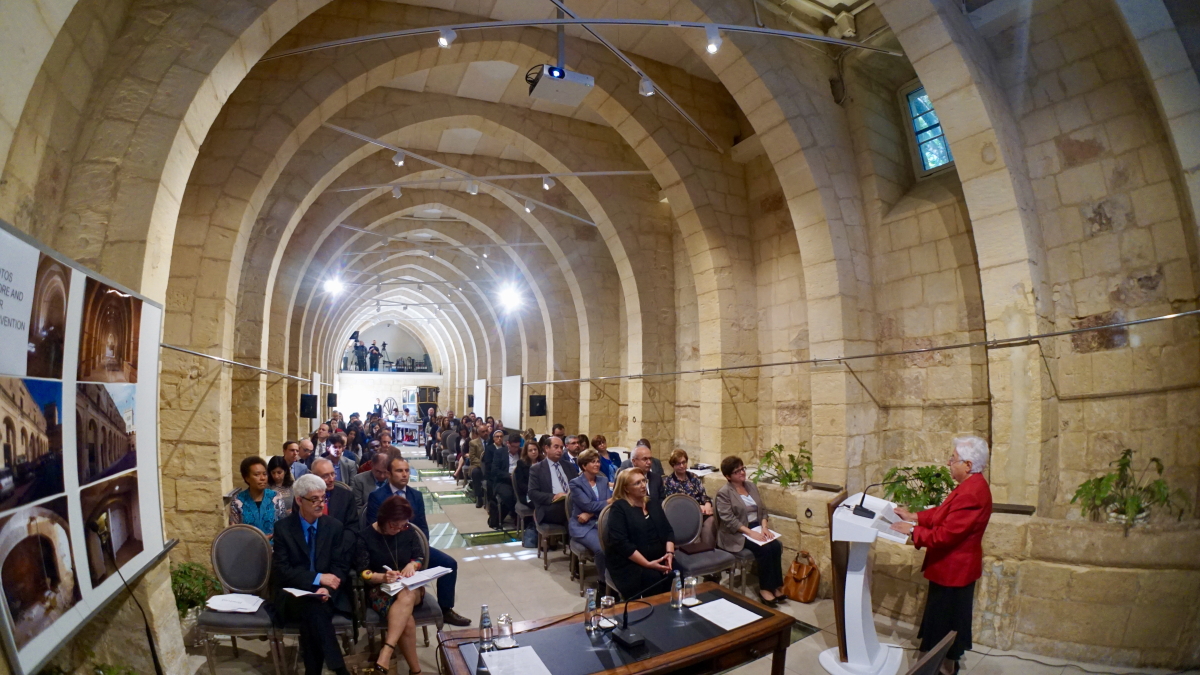 The visit (2-7 May) began with the participation on Monday, 2nd May, in the seminar promoted by “Communion and Law,” entitled, “Law as a means for integration in a multicultural society,” held in a meeting hall at the Presidential Palace, together with around 70 experts in the fields of immigration, education and employment. Among them were representatives of the Maltese Commission for refugees, representatives of the IOM and EASO Malta, Arnold Cassola, President of the Alternative Democratic Party (Alternattiva Demokratika), as well as law teachers and students. In her speech Maria Voce affirmed that the law can became an instrument for integration in society “if we overcome an exclusively formal vision, and focus on the concept of Law as an indispensable means for contributing to the creation of a reality of communion in society.” Citing the Together for Europe experience, born from an inspiration of Chiara Lubich, she talked about the actions that “appear like a prophetic sign of what Europe can become if its citizens will share more, the common experience that goes beyond the different cultures and ecclesiastical faiths,” and thus be a voice of “a Europe which, based on its own roots, opens out without fear to those who ask to be accepted and knows that the blend of peoples that have composed it for centuries can in turn blend with other peoples that will contribute to its development.” Each speech was backed by concrete initiatives, like the TANDEM project – presented by Apollos Pedro from Biafra, but a resident in Italy – which promotes peace and dialogue, giving people of different nationalities and religions the chance to live together.
The visit (2-7 May) began with the participation on Monday, 2nd May, in the seminar promoted by “Communion and Law,” entitled, “Law as a means for integration in a multicultural society,” held in a meeting hall at the Presidential Palace, together with around 70 experts in the fields of immigration, education and employment. Among them were representatives of the Maltese Commission for refugees, representatives of the IOM and EASO Malta, Arnold Cassola, President of the Alternative Democratic Party (Alternattiva Demokratika), as well as law teachers and students. In her speech Maria Voce affirmed that the law can became an instrument for integration in society “if we overcome an exclusively formal vision, and focus on the concept of Law as an indispensable means for contributing to the creation of a reality of communion in society.” Citing the Together for Europe experience, born from an inspiration of Chiara Lubich, she talked about the actions that “appear like a prophetic sign of what Europe can become if its citizens will share more, the common experience that goes beyond the different cultures and ecclesiastical faiths,” and thus be a voice of “a Europe which, based on its own roots, opens out without fear to those who ask to be accepted and knows that the blend of peoples that have composed it for centuries can in turn blend with other peoples that will contribute to its development.” Each speech was backed by concrete initiatives, like the TANDEM project – presented by Apollos Pedro from Biafra, but a resident in Italy – which promotes peace and dialogue, giving people of different nationalities and religions the chance to live together. 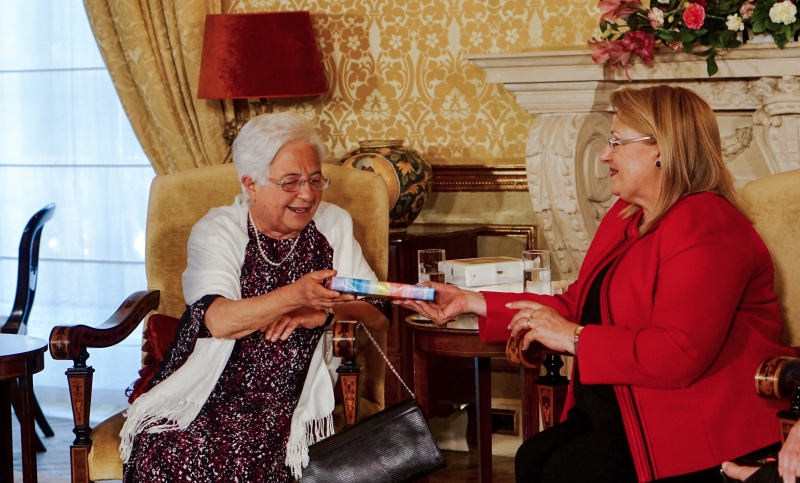 On 4th May, Maria Voce met with the President of the Republic of Malta, Marie-Louise Coleiro Preca, to whom she recounted the various branches of the Focolare Movement in Malta, and in particular the activities of New Humanity and the initiatives of the teenagers and young people. The President showed great interest and in the end, greeted the youth with a warm embrace. “The Focolare is like a vitamin boost. The art of loving is a precursor to positive peace in a world that is increasingly narcissistic and egocentric.” The children then presented her with the “Dice of love”. The Focolare President had been invited by the Malta Diocese, through its Ecumenical Commission, on the occasion of the 40th anniversary of its foundation. In this context, on 5th May, Maria Voce was received by the Archbishop C.J. Scicluna. Immediately afterwards, in the presence of 300 participants, she gave a conference on the topic “Dialogue or Dialogues – A Way of Life”.
On 4th May, Maria Voce met with the President of the Republic of Malta, Marie-Louise Coleiro Preca, to whom she recounted the various branches of the Focolare Movement in Malta, and in particular the activities of New Humanity and the initiatives of the teenagers and young people. The President showed great interest and in the end, greeted the youth with a warm embrace. “The Focolare is like a vitamin boost. The art of loving is a precursor to positive peace in a world that is increasingly narcissistic and egocentric.” The children then presented her with the “Dice of love”. The Focolare President had been invited by the Malta Diocese, through its Ecumenical Commission, on the occasion of the 40th anniversary of its foundation. In this context, on 5th May, Maria Voce was received by the Archbishop C.J. Scicluna. Immediately afterwards, in the presence of 300 participants, she gave a conference on the topic “Dialogue or Dialogues – A Way of Life”. 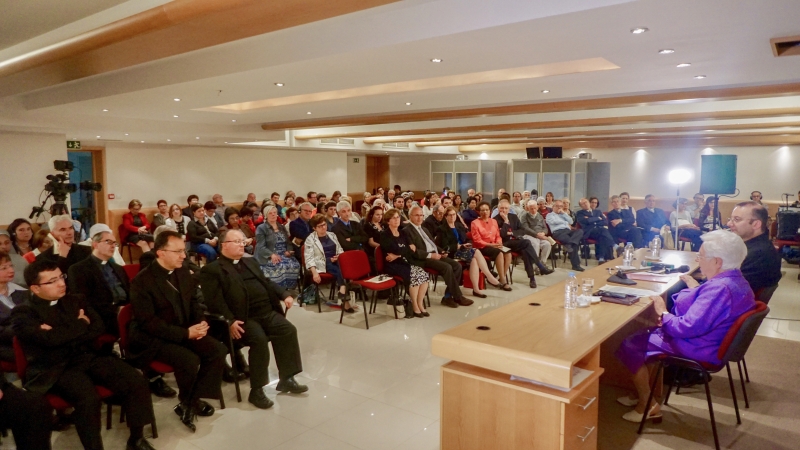 Also present were the Archbishop, the President of the Ecumenical Commission, the Vicar General, the Secretary of the Nunciature of Malta, the Nuncio of the Ivory Coast (of Maltese origin), a representative of the Romanian Orthodox Church, two members of the “Robert Schuman Centre for European Studies” and several members of ecclesial organisations. In tracing the rich history of the Movement’s ecumenical commitment, Maria Voce explained that the method of dialogue which Chiara Lubich promoted is love, “a dialogue between people, not between ideologies of systems of thought. She said that this must necessarily be supported and substantiated by mercy, compassion, and charity, summarised in the Golden Rule present in every culture and religion: Do to others whatever you wish others to do to you (Mt 7:12).” “The only way to ease the way to unity in truth is that of bowing before the others in the attitude of washing their feet (cf Jn 13) instead of telling them off. We need a lot of patience and humbleness.” Lastly, she presented the Ottmaring Declaration, published in Germany last 21 February, in which the Focolare Movement undertakes a greater ecumenical commitment. In the end, the Archbishop thanked Maria Voce for the work of the Focolare Movement in “arousing in people the thirst for unity.” He also recalled a phrase of Paul VI: “the world listens more to witnesses than to teachers.” Read about the Focolare in Malta
Also present were the Archbishop, the President of the Ecumenical Commission, the Vicar General, the Secretary of the Nunciature of Malta, the Nuncio of the Ivory Coast (of Maltese origin), a representative of the Romanian Orthodox Church, two members of the “Robert Schuman Centre for European Studies” and several members of ecclesial organisations. In tracing the rich history of the Movement’s ecumenical commitment, Maria Voce explained that the method of dialogue which Chiara Lubich promoted is love, “a dialogue between people, not between ideologies of systems of thought. She said that this must necessarily be supported and substantiated by mercy, compassion, and charity, summarised in the Golden Rule present in every culture and religion: Do to others whatever you wish others to do to you (Mt 7:12).” “The only way to ease the way to unity in truth is that of bowing before the others in the attitude of washing their feet (cf Jn 13) instead of telling them off. We need a lot of patience and humbleness.” Lastly, she presented the Ottmaring Declaration, published in Germany last 21 February, in which the Focolare Movement undertakes a greater ecumenical commitment. In the end, the Archbishop thanked Maria Voce for the work of the Focolare Movement in “arousing in people the thirst for unity.” He also recalled a phrase of Paul VI: “the world listens more to witnesses than to teachers.” Read about the Focolare in Malta

 It was the end of 1945 in Trent, Italy, when the war had just ended. Marco was 19 years old and going through a very deep spiritual crisis. A friend who belonged to a community of Men Religious had invited him to a meeting. A young woman, a little older than himself, “spoke about God with such fervour and conviction that there wasn’t any room for doubts,” he later recalled. That young woman was Chiara Lubich who was joined by a group of girls who, like her, had chosen God as their ideal in life. In no time, Marco became the first young man to follow her. He was the first focolarino. The Tecilla family were simple folk, his father a baker, his mother a nurse, one sister and three brothers. With the Great Depression of 1929, his father lost his job. “I remember him covering himself with a mantle in the cold winter months,” Marco recounts, “and me accompanying him from one bread shop to the next, knocking on doors and asking for work, or basket of bread to feed ourselves. I later discovered that as he held on to my hand, with the other hand he counted the beads of his Rosary.” In January 1943 his father died. War broke out and the bombardments began on Trent. The Tecilla family fled to the mountains. Marco avoided the call to arms by signing up for civil service. Meanwhile,he was hired as an operator at the Trento- Malè Railway. His sister, Maria, began to attend a lot of spiritual retreats and to collect clothing for the poor. The family – and Marco – thought she was “over doing it” – until he received that invitation from the friend who belonged to the Men’s Religious community and Marco’s encounter with God-Love.
It was the end of 1945 in Trent, Italy, when the war had just ended. Marco was 19 years old and going through a very deep spiritual crisis. A friend who belonged to a community of Men Religious had invited him to a meeting. A young woman, a little older than himself, “spoke about God with such fervour and conviction that there wasn’t any room for doubts,” he later recalled. That young woman was Chiara Lubich who was joined by a group of girls who, like her, had chosen God as their ideal in life. In no time, Marco became the first young man to follow her. He was the first focolarino. The Tecilla family were simple folk, his father a baker, his mother a nurse, one sister and three brothers. With the Great Depression of 1929, his father lost his job. “I remember him covering himself with a mantle in the cold winter months,” Marco recounts, “and me accompanying him from one bread shop to the next, knocking on doors and asking for work, or basket of bread to feed ourselves. I later discovered that as he held on to my hand, with the other hand he counted the beads of his Rosary.” In January 1943 his father died. War broke out and the bombardments began on Trent. The Tecilla family fled to the mountains. Marco avoided the call to arms by signing up for civil service. Meanwhile,he was hired as an operator at the Trento- Malè Railway. His sister, Maria, began to attend a lot of spiritual retreats and to collect clothing for the poor. The family – and Marco – thought she was “over doing it” – until he received that invitation from the friend who belonged to the Men’s Religious community and Marco’s encounter with God-Love.  From the moment he met Chiara and the first group of young women, he went often to do odd jobs at the “little house” in Cappuccini square, where the women focolarine lived. He was drawn by the supernatural atmosphere that he found in that place. “One evening,” he recalls, “I had to work a little longer than usual, to finish up some repair work. Chiara was working on some sewing, sitting at the table nearby. Without warning she turned to me and said: “If Jesus were to come today, he would be Jesus 24 hours a day, whether working, praying, eating, resting . . . in today’s world he’d be an electrician like you . . .” Marco was quite struck by “this new vision of the Christian life. I saw a new horizon opening before me, overflowing with light. When I left the “little house” the sky was all dotted with stars. A new life began for me and I had to turn the page and abandon myself to the arms of the God who had manifested himself to me as LOVE.” Marco felt that Jesus was calling to him: If you want to be perfect go and sell what you have and give it to the poor; then, come and follow me. Following Jesus, that’s my path.” On the evening of November 27, 1948 the first men’s focolare was begun with Livio who had also been added to the group. Marco never imagined that in the years to come he would be moved thirty times! The nascent Movement spread quickly all over the world and Marco would move to many cities in Italy . . . In 1953 to Innsbruck, in 1958 to Uruguay, Argentina, Brazil and Chile; in 1960 to Trieste, Italy, and then beyond the Iron Curtain in Zagreb. On November 22, 1964 he was to the priesthood and returned to Brazil until 1967, returning again until 1971. Then he was in southern Italy and Milan, Padua and finally Trent after 31 years away. That is when he found the land for the new Mariapolis Centre in Cadine and took part in the project that Chiara Lubich launched in 2001: Trento Ardente. At the end of that year, Chiara wanted him at the Centre of the Movement in Rocca di Papa, Italy, where he would live out the last years of his life.
From the moment he met Chiara and the first group of young women, he went often to do odd jobs at the “little house” in Cappuccini square, where the women focolarine lived. He was drawn by the supernatural atmosphere that he found in that place. “One evening,” he recalls, “I had to work a little longer than usual, to finish up some repair work. Chiara was working on some sewing, sitting at the table nearby. Without warning she turned to me and said: “If Jesus were to come today, he would be Jesus 24 hours a day, whether working, praying, eating, resting . . . in today’s world he’d be an electrician like you . . .” Marco was quite struck by “this new vision of the Christian life. I saw a new horizon opening before me, overflowing with light. When I left the “little house” the sky was all dotted with stars. A new life began for me and I had to turn the page and abandon myself to the arms of the God who had manifested himself to me as LOVE.” Marco felt that Jesus was calling to him: If you want to be perfect go and sell what you have and give it to the poor; then, come and follow me. Following Jesus, that’s my path.” On the evening of November 27, 1948 the first men’s focolare was begun with Livio who had also been added to the group. Marco never imagined that in the years to come he would be moved thirty times! The nascent Movement spread quickly all over the world and Marco would move to many cities in Italy . . . In 1953 to Innsbruck, in 1958 to Uruguay, Argentina, Brazil and Chile; in 1960 to Trieste, Italy, and then beyond the Iron Curtain in Zagreb. On November 22, 1964 he was to the priesthood and returned to Brazil until 1967, returning again until 1971. Then he was in southern Italy and Milan, Padua and finally Trent after 31 years away. That is when he found the land for the new Mariapolis Centre in Cadine and took part in the project that Chiara Lubich launched in 2001: Trento Ardente. At the end of that year, Chiara wanted him at the Centre of the Movement in Rocca di Papa, Italy, where he would live out the last years of his life.  “His joy was always hard to contain when he came to Loppiano to give lessons on the Spirituality to members of the schools,” recalls Redi Mghenzani who lived with Marco for 20 years, “ [He showed special care and attention] when it came to the new generations of men and women focolarini. He leaves us a trail of light that will never be extinguished.” “Marco sowed love in many parts of the world,” recalls focolarino Armando Droghetti, who accompanied Marco during the final years of his life,” that love which allowed unity to be born among people from all social and cultural backgrounds, as many of the numberless visitors from this past month had said; especially from last year when a series of small strokes affected him in different ways. But as everything seemed to be failing in Marco (his voice became weaker and weaker, his legs were somehow blocked) the situation pushed all of us, beginning with Marco, to supplement our mutual love. Based on this spiritual life and an ever more intense unity in our focolare, even the unexpected crisis of May 8th didn’t catch Marco and us off guard. During a brief upturn in his condition he remarked with great certainty: “I only need to be purified.” He would welcome the doctor with those shining eyes that seemed to wrap everyone in love. And this was also the impression of many who went to say their final goodbye. They said that beyond a sense of orphan hood because of his departure, what Marco had prepared them for by saying I’m nothing and God is everything. Only in Him do we live” – was even stronger. Focolare president, Maria Voce, highlighted that “Marco that mark of radicalness of the early times of the Movement, along with his strength and faith in the charism of unity with the purity of his Gospel live.” In an interview that was released on March 31, 2008, a few days after Chiara Lubich died, Marco stated: “As long as I have a bit of breath, my wish is to be able to give my all to the new generations. I’m sure that whoever comes after us will do greater things than we did, precisely because of the richness that is transmitted by the charism of unity, which will never ever die.”
“His joy was always hard to contain when he came to Loppiano to give lessons on the Spirituality to members of the schools,” recalls Redi Mghenzani who lived with Marco for 20 years, “ [He showed special care and attention] when it came to the new generations of men and women focolarini. He leaves us a trail of light that will never be extinguished.” “Marco sowed love in many parts of the world,” recalls focolarino Armando Droghetti, who accompanied Marco during the final years of his life,” that love which allowed unity to be born among people from all social and cultural backgrounds, as many of the numberless visitors from this past month had said; especially from last year when a series of small strokes affected him in different ways. But as everything seemed to be failing in Marco (his voice became weaker and weaker, his legs were somehow blocked) the situation pushed all of us, beginning with Marco, to supplement our mutual love. Based on this spiritual life and an ever more intense unity in our focolare, even the unexpected crisis of May 8th didn’t catch Marco and us off guard. During a brief upturn in his condition he remarked with great certainty: “I only need to be purified.” He would welcome the doctor with those shining eyes that seemed to wrap everyone in love. And this was also the impression of many who went to say their final goodbye. They said that beyond a sense of orphan hood because of his departure, what Marco had prepared them for by saying I’m nothing and God is everything. Only in Him do we live” – was even stronger. Focolare president, Maria Voce, highlighted that “Marco that mark of radicalness of the early times of the Movement, along with his strength and faith in the charism of unity with the purity of his Gospel live.” In an interview that was released on March 31, 2008, a few days after Chiara Lubich died, Marco stated: “As long as I have a bit of breath, my wish is to be able to give my all to the new generations. I’m sure that whoever comes after us will do greater things than we did, precisely because of the richness that is transmitted by the charism of unity, which will never ever die.”








 With regard to the culture that could emerge when there is profound reconciliation, Maria Voce quoted
With regard to the culture that could emerge when there is profound reconciliation, Maria Voce quoted 



 On 4th May, Maria Voce met with the President of the Republic of Malta,
On 4th May, Maria Voce met with the President of the Republic of Malta,  Also present were the Archbishop, the President of the Ecumenical Commission, the Vicar General, the Secretary of the Nunciature of Malta, the Nuncio of the Ivory Coast (of Maltese origin), a representative of the Romanian Orthodox Church, two members of the “Robert Schuman Centre for European Studies” and several members of ecclesial organisations. In tracing the rich history of the
Also present were the Archbishop, the President of the Ecumenical Commission, the Vicar General, the Secretary of the Nunciature of Malta, the Nuncio of the Ivory Coast (of Maltese origin), a representative of the Romanian Orthodox Church, two members of the “Robert Schuman Centre for European Studies” and several members of ecclesial organisations. In tracing the rich history of the